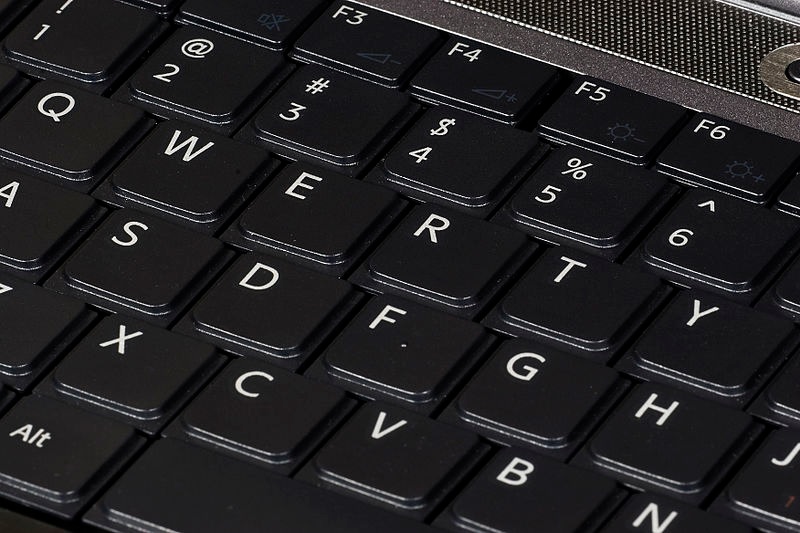
Keyboarding in early elementary grades continues to work on developing familiarity with the keyboard. That means knowing all the letters and learning about where they are on the keyboard. It also means learning what fingers to use to strike each letter. Another factor is should the keyboard be a virtual [like an on-screen keyboard] or a standard keyboard. Well, a very small study (N=18) conducted by Brady Cline [http://www.bradycline.com/2013/in/ipad-typing/], showed that, “This small study makes it clear that the perception that students type faster on traditional keyboards is not correct for our current elementary students. In fact, students were slightly faster on a virtual keyboard than on a computer or iPad keyboard. ” I am all thumbs when typing on a virtual keyboard myself, but I don’t practice much. On a traditional QWERTY keyboard, I can type approximately 100 words per minute if my hands are positioned correctly and the keyboard is aligned with my midline. For me, if my body and the keyboard are not aligned, my error rate goes well beyond what is considered to be typical (93% accurate). So I believe that keyboarding should begin with learning the right body alignment and hand placement on the keyboard. About.com [http://video.about.com/familyinternet/Computer-Ergonomics-for-Kids.htm#vdTrn] has a nice little video about proper positioning when using a computer for kids.
Should we forgo handwriting replacing handwriting with keyboarding? NO! I am so happy to see that in the State of Utah,
The State School Board voted to approve the additions to the Utah Core Standards that include teaching manuscript and cursive writing and also include building fluency in reading cursive writing. Handwriting (both manuscript and cursive) is an important skill for students to learn. Teaching and practicing writing allows students to write letters correctly and efficiently. Fluent writers are able to focus on generating idea, producing grammatically correct text, and considering audience. Even when a student moves to a computer or other device, that writing fluency is important to the composing process. [http://www.schools.utah.gov/curr/langartelem/actions-and-programs/handwriting.aspx]
Keyboarding is handwriting’s complement for 21st century environments, and it is a practice that will become increasingly important for students’ writing success. Children access all types of technology at home—even before they attend school—and schools can provide the developmentally appropriate instruction to bolster their fluency and efficiency in using keyboard-input devices to make them truly “bilingual by hand” (Berninger, 2012). [WRITTEN-LANGUAGE PRODUCTION STANDARDS FOR Handwriting & Keyboarding (Grades K–8)]
I am so happy to see that Utah embraces the fact that students need handwriting but also need computing skills. Utah has a wealth of information on keyboarding and reinforces the concepts of computational thinking with computers. So with all that being said, during the next few years (K-3) children should be focusing on the following:
- posture
- familiarity with the keyboard
- touch typing skills for accuracy [speed is generally not assessed until the end of the 3rd grade or the beginning of the 4th]
- familiarity with program features, such as spell check
- Familiarity with a presentation and simple gaming style programming [PowerPoint, Xtranormal, etc]. The program chosen for the student should reflect his or her interest and skill.
At this age, keyboarding should be fun, creative and expressive. Children should experiment with different fonts, like different handwriting styles.




You must be logged in to post a comment.